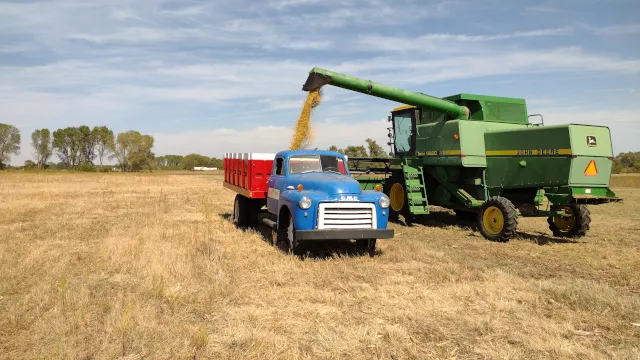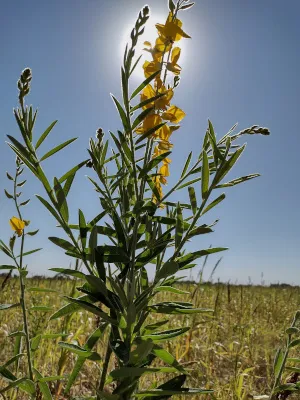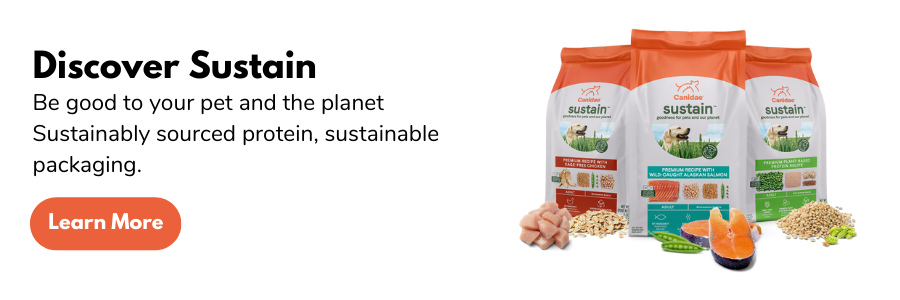How Canidae’s Farmers are Changing the Pet Food Game and Minimizing Their Impact on Our Planet.

Clint Brauer, Chief Executive Officer of Greenfield Robotics explains the link between regenerative farming, robotics, and pet food – and how he works with Canidae® to make food better for your pet and our planet.
"I won't rest until your food and your pets' food is chemical-free"
I grew up in Kansas with broadacre farms on both sides of my family and a dairy farm that was still operating when I was little. After college, I moved to Los Angeles and started in Internet development in the 90s. That led to being involved in many startups and executive roles at Sony Music, Sony Pictures, and Sony Corporate. I dressed a bit fancier in those days.
I moved back to Kansas in 2010 to start a completely different life (again). Then in 2011, against the wishes of almost anyone who cared about me, I decided to focus on a mission to eliminate chemicals from farming.
In 2015, after five incredibly labor-intensive years building greenhouses and distributing chemical-free produce into grocery stores and restaurants in the Wichita and Kansas City areas, I turned my focus to broadacre crops.
'It was time to have the biggest impact possible.'
Broadacre agriculture encompasses 250 million acres of cropland in the United States and 2 billion acres globally. Crops such as oats, milo, millet, corn, peas, barley, wheat, cotton, and soybeans are grown on these fields. If we are going to reduce chemical loads and reduce carbon inputs, this is where the biggest potential lever for improvement exists.
MG Honor Farms sold its first milo crop to Canidae in 2015. That led us on a journey that has resulted in a growing supply chain of regeneratively farmed crops.
 What is regenerative agriculture?
What is regenerative agriculture?
Since the Green Revolution, farming has attempted to control nature with the use of chemicals.
The result, predictably, has been a distortion of various ecosystems and human health.
Regenerative agriculture works with nature, not against it. Specifically, regenerative agriculture for broadacre farming contains these elements:
● Reduced or no-tillage ● Extended cash crop rotation cycles (meaning, you rotate cash crops much more often) ● Cover cropping (crops grown to restore the soil) ● Intensive grazing of livestock on cover crops and cash crops
The results of regenerative farming are remarkable.
● 30-60 gigatonnes of carbon sequestered over the next several decades ● Reduced soil erosion ● Reduced or eliminated use of chemical herbicides ● Reduced or eliminated use of chemical fertilizer ● Grass-fed, antibiotic-free, grazing animals such as cattle, sheep, and goats ● The increased nutrient density of crops
The end result is healthy soil and the elimination of chemicals from farming.
The challenge of regenerative agriculture is it is difficult to scale all the parts above. New tools are needed for farmers to be able to scale the approach, with the flexibility needed, and eliminate ALL herbicides, ALL fertilizers and graze ALL acres with cattle, sheep or goats.
How robotics help us protect the planet
Greenfield Robotics creates robots that allow regenerative agriculture to scale. Our first robots reduced the need for herbicides and weeded over 500 acres this summer. We think our next robot will eliminate all need for herbicides.
There’s a lot at stake here for the health of our planet but also our own health. There are a number of things I have seen in my personal life, including family illness, that show our food system not only has a huge impact on the health of the planet but also the health of humans and pets as well.
Regenerative Agriculture has the opportunity to solve some of the health crises.

Connection with Canidae
How did I become involved with Canidae? Farms are rarely profitable. Subsidies carry them. Regenerative agriculture solves all of that. It gives farmers back control of their farms. It makes them profitable. It gets them off chemicals. It provides new revenue opportunities, and we all profit from the healthier ingredients they produce.
I have worked with Canidae since 2015 and it’s just getting started. They have big goals when it comes to creating a healthier, better world for pets and our planet, and I’m here to support them on this mission. They have set the ambitious goal of sourcing over 80% of their ingredients from regenerative agriculture by 2030 by partnering with farmers like myself.
Their new line of food, Sustain, is made with responsibly sourced proteins such as cage-free chicken, wild-caught salmon, and they even have a vegetarian line made with upcycled brewer’s yeast. They are also investing in their operational practices from using packaging with 40% post-consumer recycled materials to lowering their carbon footprint by transporting food in a more sustainable way.
I’m excited to be a part of their sustainability journey, as they work to make a more sustainable world for our pets and our planet.
Learn more about Canidae and how they bring goodness to pets, people, and the planet.
Learn more about transitioning your dog food to Canidae today.


